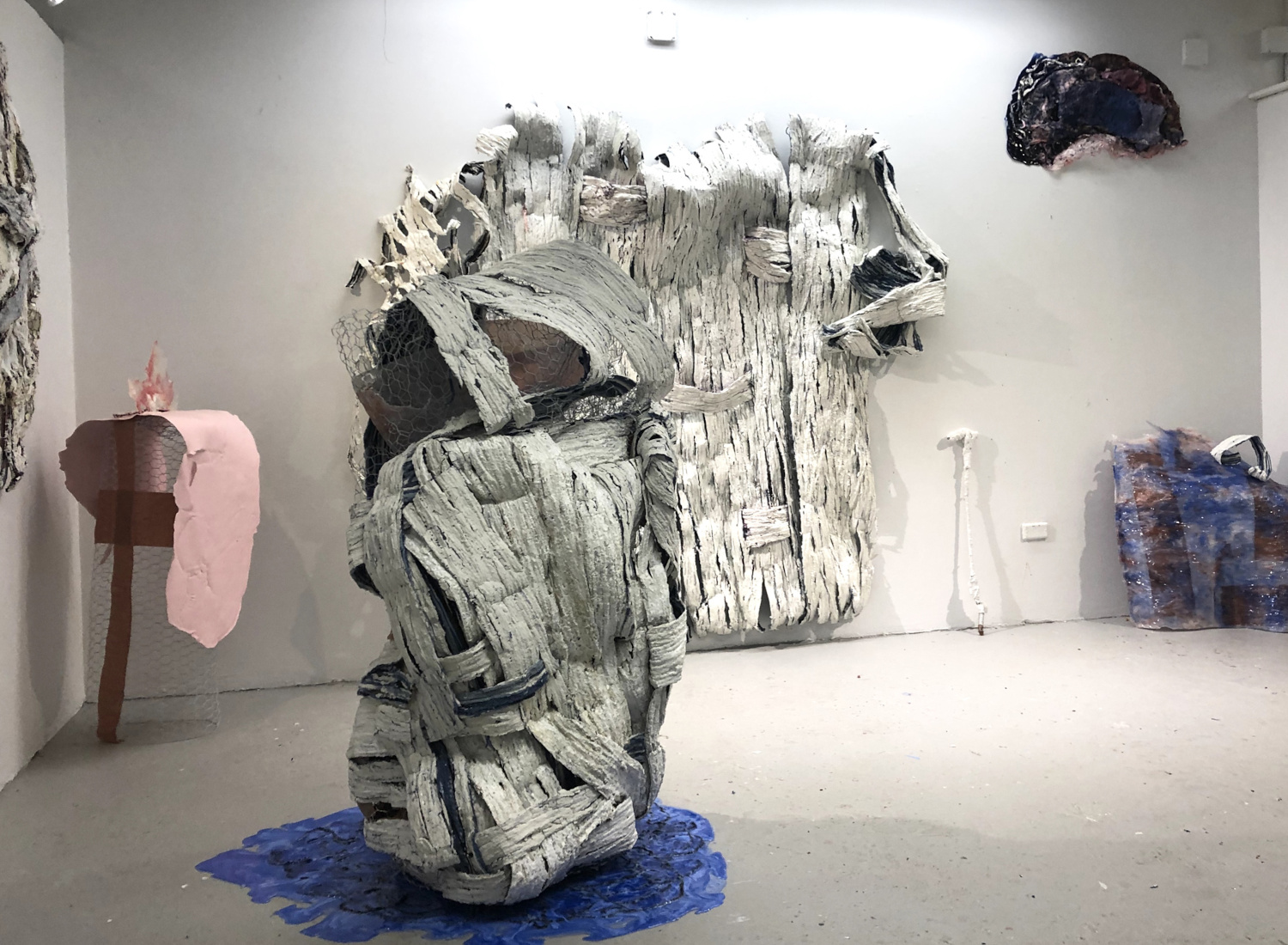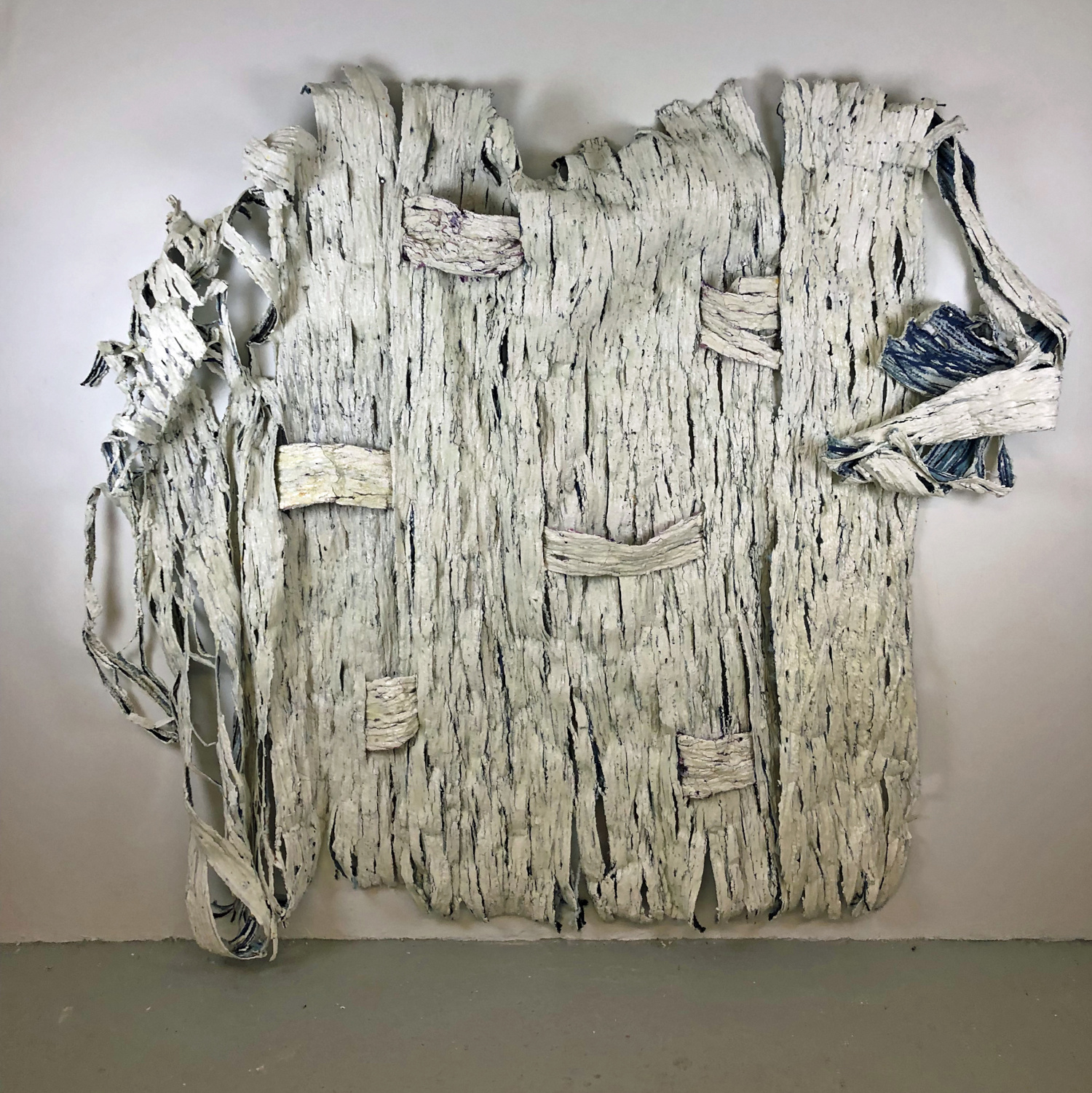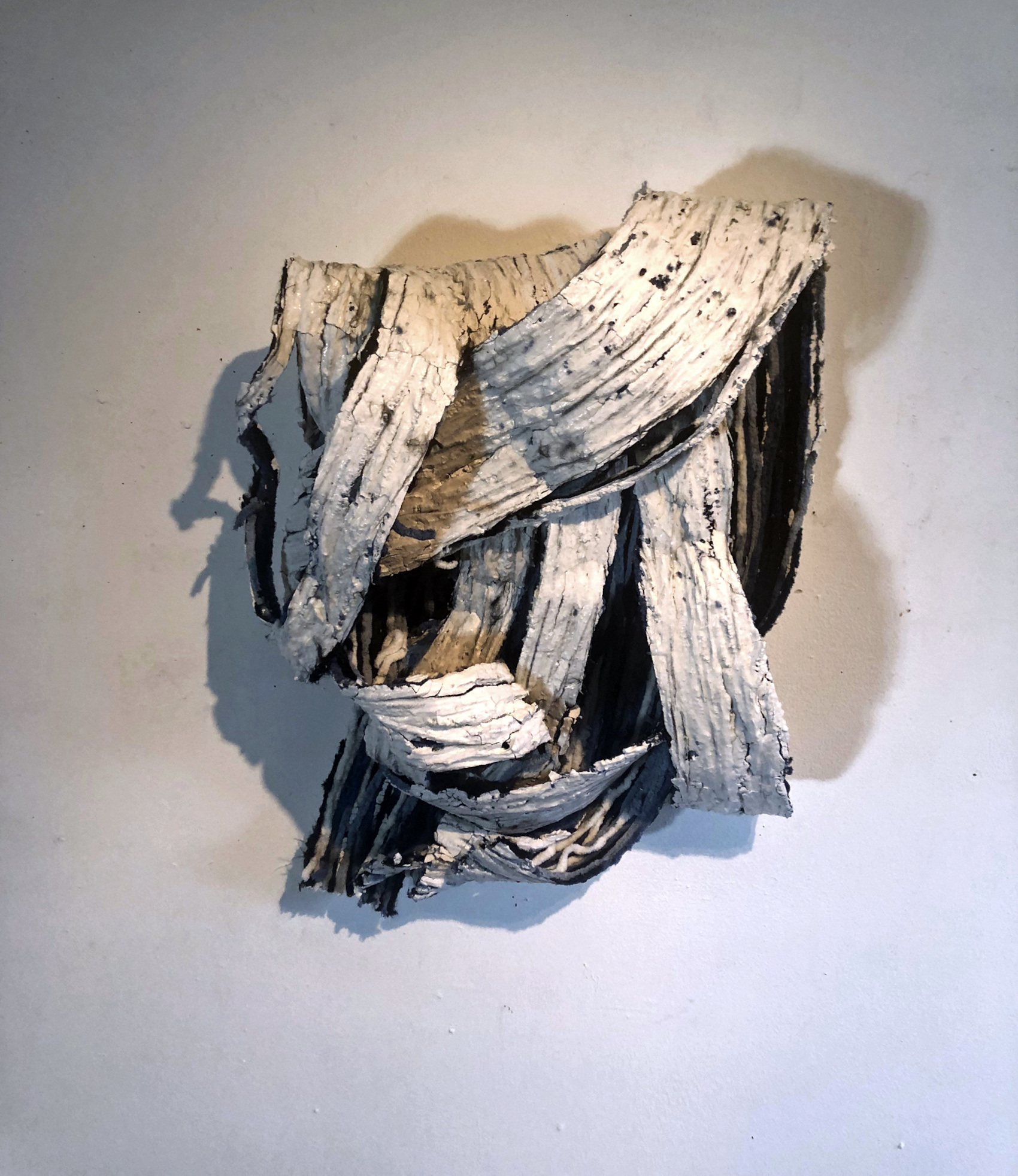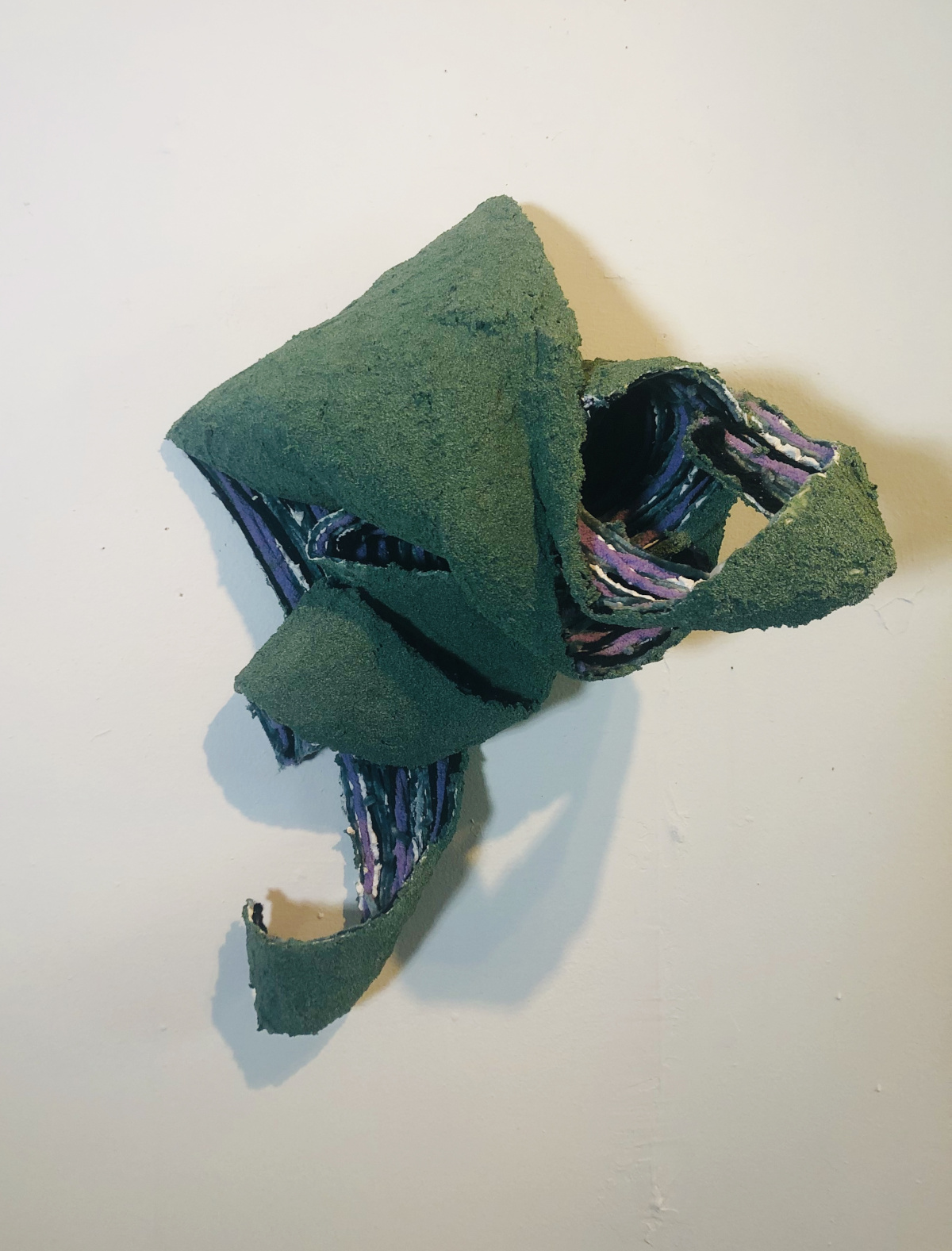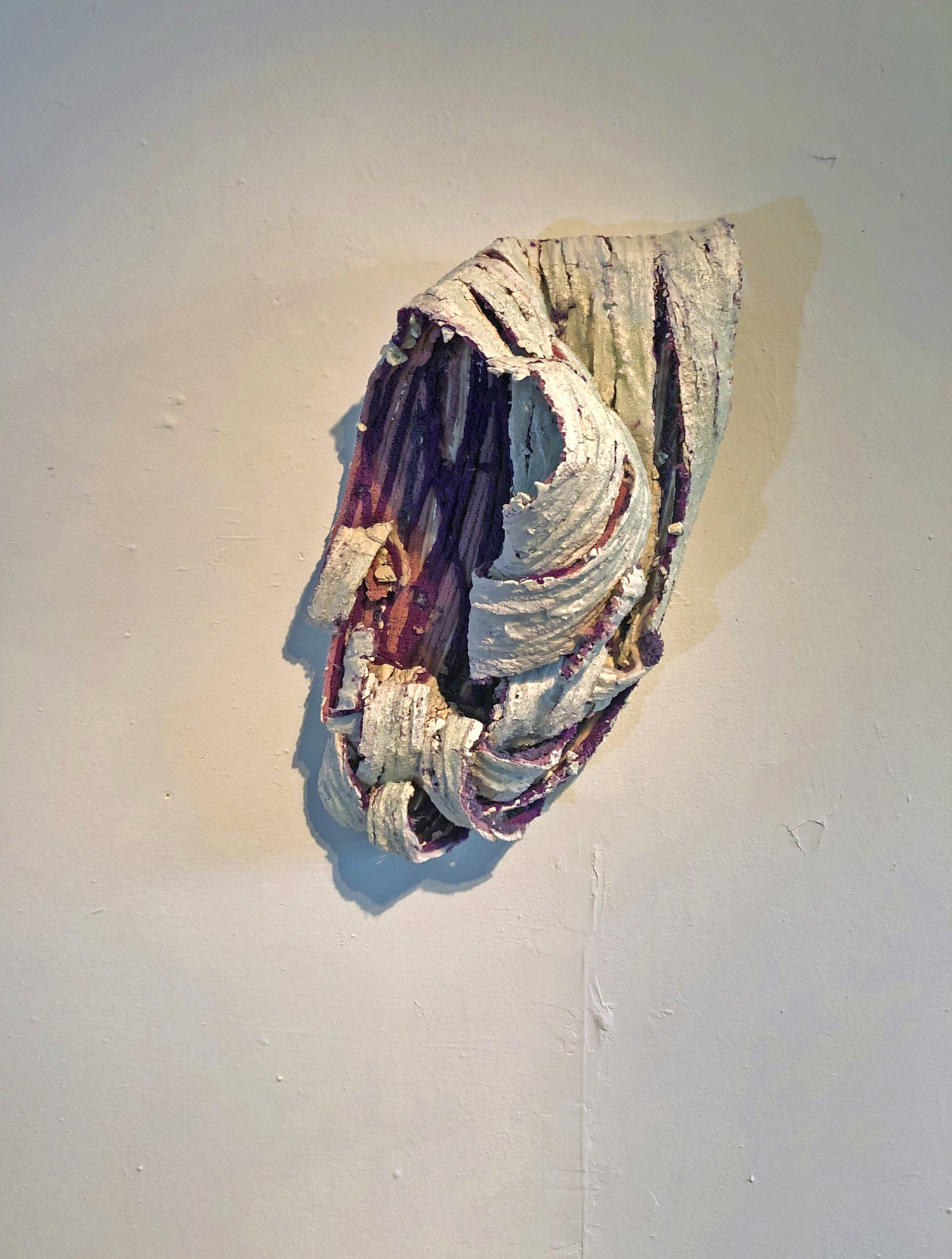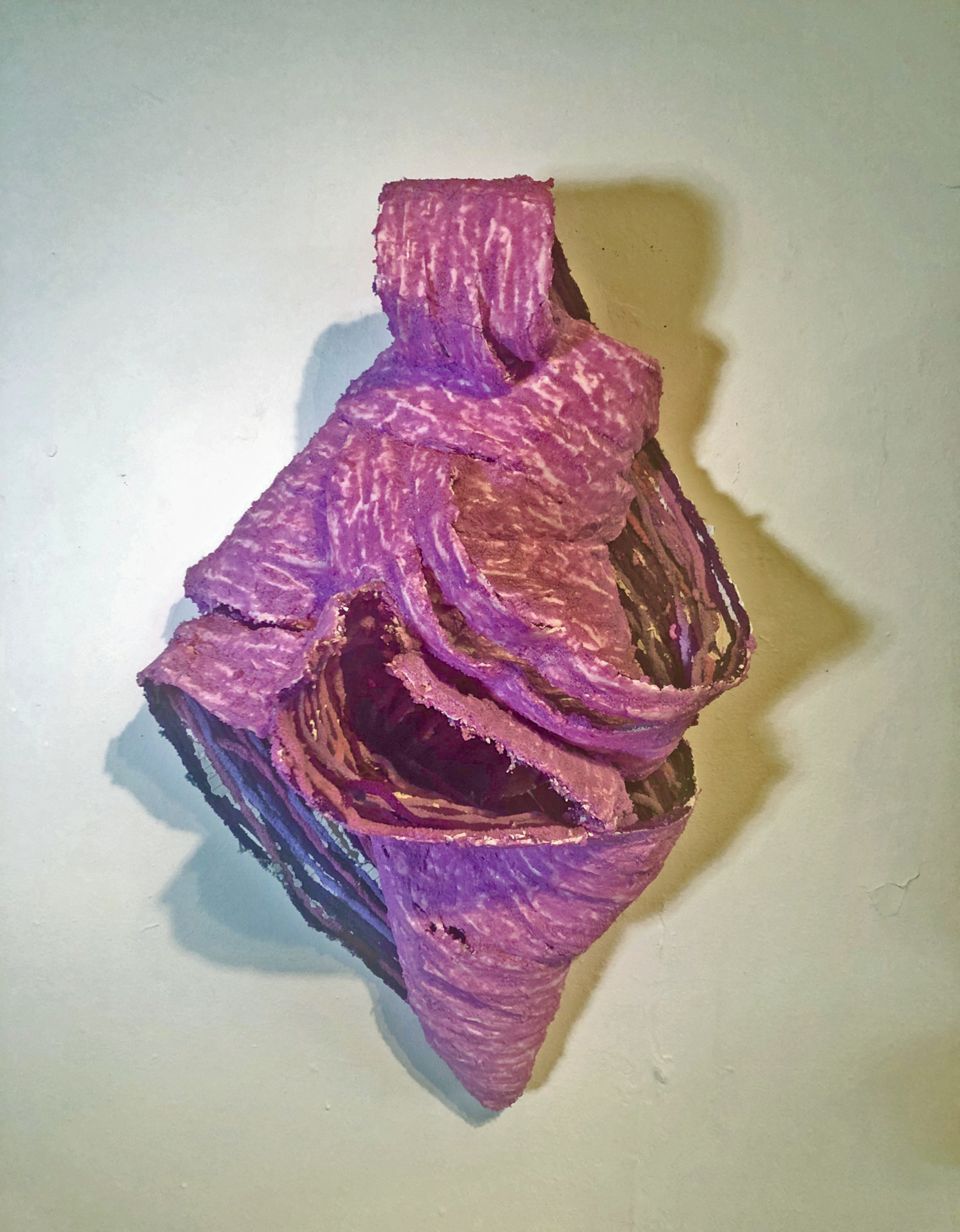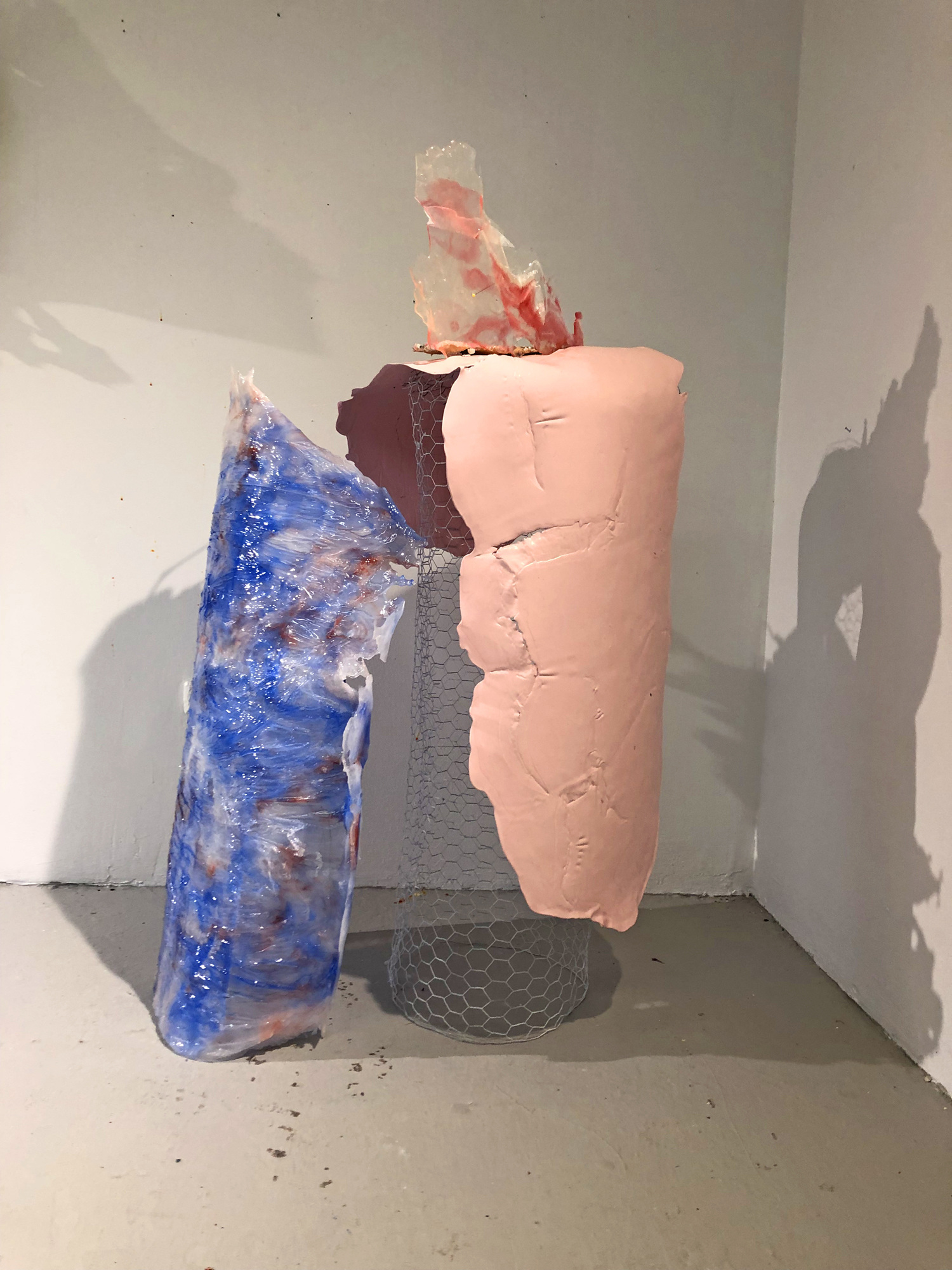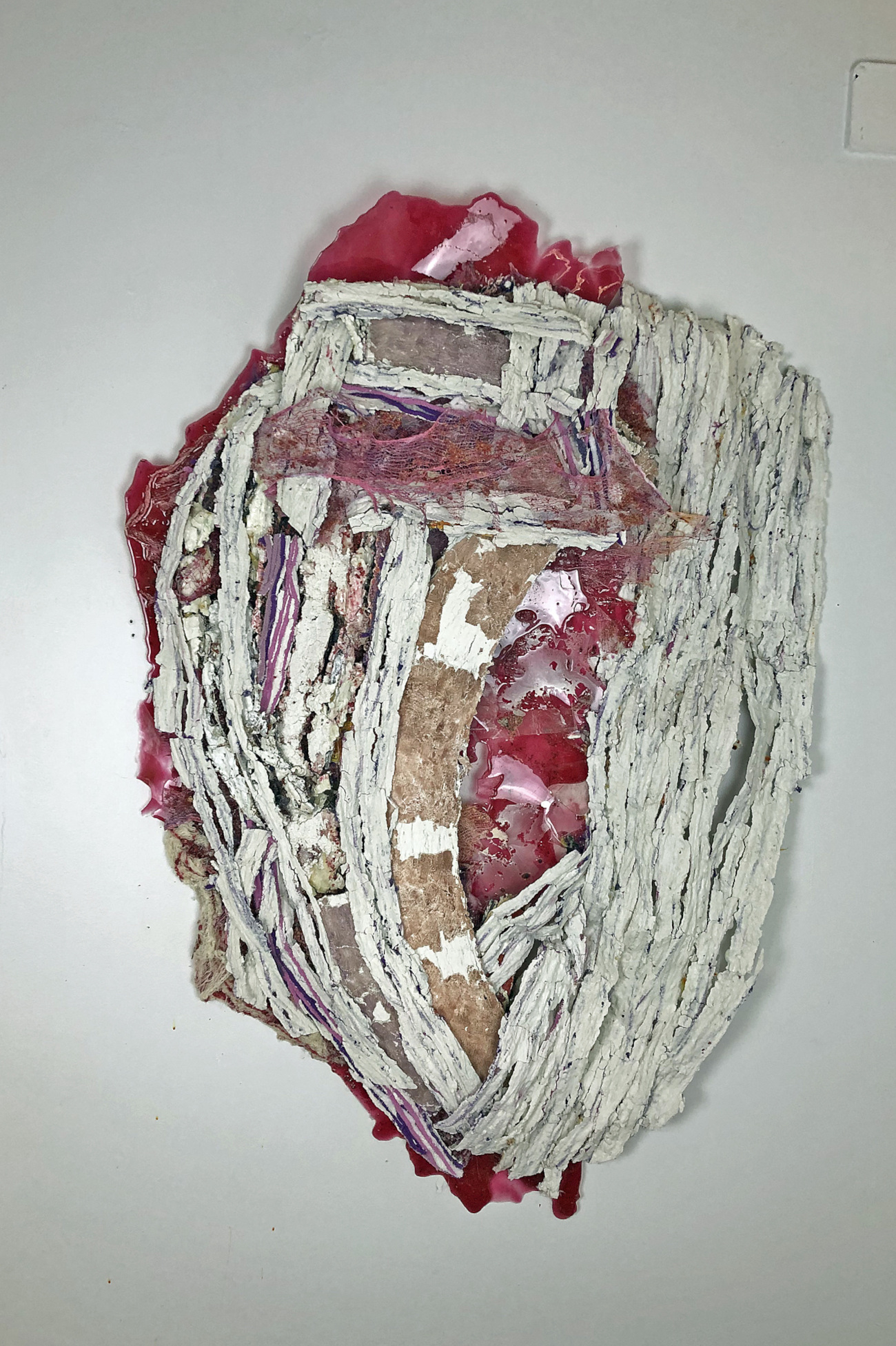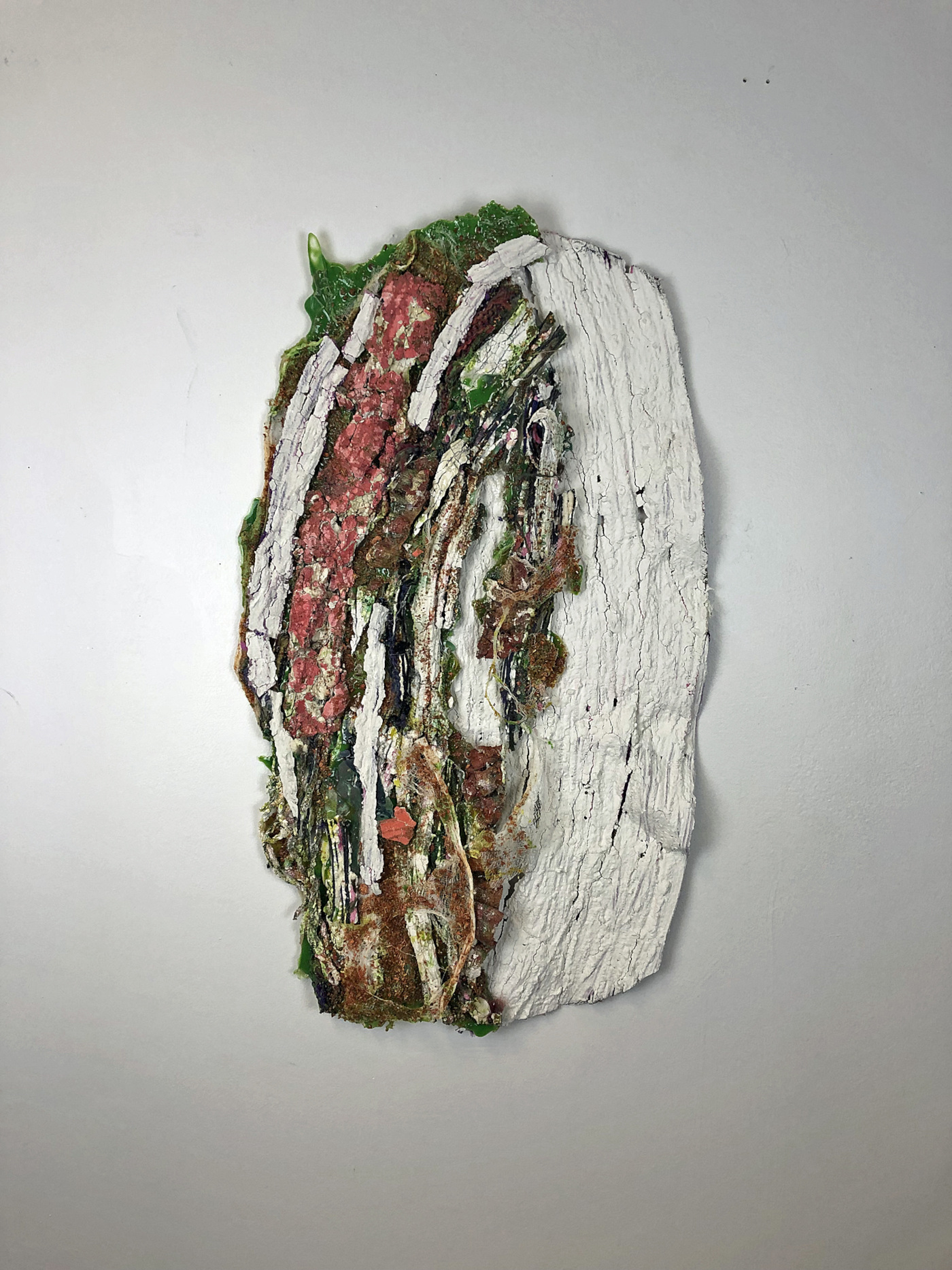In walking, interpretation frequently lags behind actual temporal experience. When walking, we transgress and re-establish new boundaries by continually re-defining a new “frame” for our field of experience. Walking itself does not make art in the traditional sense except for perhaps a trail as seen in Richard Long’s A Line Made by Walking. The physical act of putting one foot in front of the other is repetitive and tied to rhythms of organic processes. Wandering, the deliberate moving off a set course is about non-conforming and remaining open to a new way of facing everyday challenges. With this type of ambulation, the role of gesture and habit are the foreground and suggest opportunities for ritual as material and conceptual connection with nature. It is an invitation to linger, a slow immersion into an environment like a cave or a forest that allows for transformation.
Walking or wandering in a forested area is a daily part of my studio practice. Here the tree form acts as a metaphor, respite, teacher and model for my overall art practice where I combine many mediums and textures. While walking I meditate on the ever present awareness of the impact on the human body and spirit as a result of cultural pressures, communication overload and isolation. I am curious about the psychic and spiritual effects experienced in this ritual of walking in the forest and how this manifests in processing concerns related to a range of emotions such as joy, loneliness, uncertainty, and fear. The resilience of the tree and its adaptability to changes in the landscape is a model I use to express our shared human desire for strength and courage. Reflecting on a quote from Janet Laurence from her work found in the exhibition After Nature, Laurence states, “Trees for me are the great signals of change. They become a register of what’s happening through climate change, pollution and poisoned waters.” In my sculptures the tree is represented by references to bark using skin-like materials such as resin, hand made tree bark, chicken wire, cheese cloth and Ace Bandages. The bark of the tree is made up of living cells and acts as a skin which shields the tree from disease, animals and insects much like our own skin. To facilitate bridging this phenomena of shared skin like properties I have followed in the footsteps of Ana Mendieta by gathering found, up-cycled and recycled materials that are woven or cast into figurative sculptures and nest like assemblages. My mode of combining materials mimics the ritual and repetition of walking in the forest. Interweaving or layering of materials speaks to the balance between strength and fragility.
My engagement with specific materials has a long family lineage beginning with my great grandfather, Julius Schubert, who emigrated from Denmark in 1870. Schubert was one of a few fresco painters who helped to rebuild Chicago after the Chicago fire. A recent trip to the ancient cave paintings and earlier fresco works found at Grotte de Naiux, France, showed records of daily rituals and interactions with the natural world which provided physical and spiritual well being. The makers of these early fresco paintings also employed walking, ritual and repetition to speak of their connection to nature. My recent sculptures and mixed media objects incorporate the use of the fresco technique bringing historically grounded materials into contemporary painting and sculptural discourse. It is through a continual process of constructing, deconstructing and reconstructing that I reach outside of the familiar and invite the viewer to engage with the healing power of nature and to ponder the shared nuances of the human condition.
